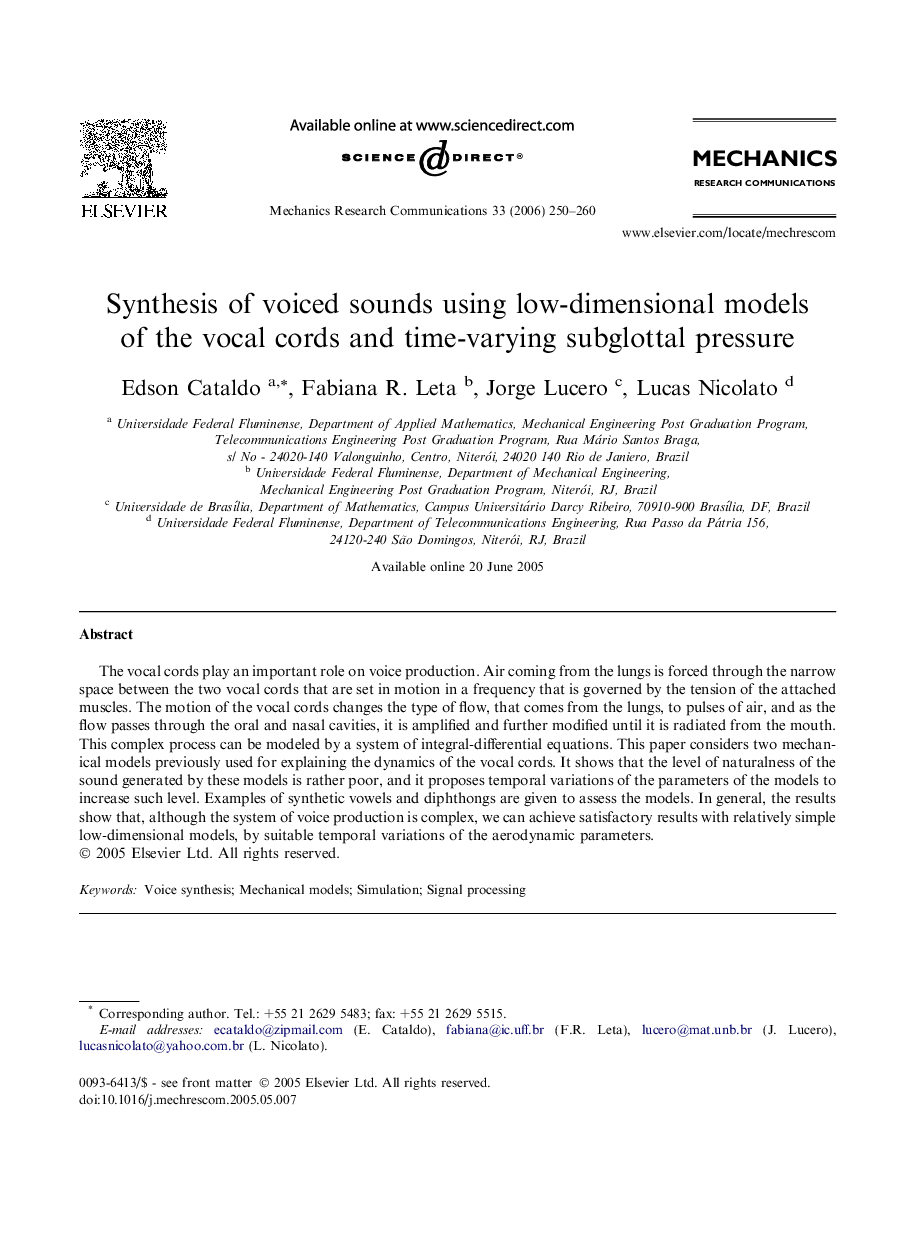| Article ID | Journal | Published Year | Pages | File Type |
|---|---|---|---|---|
| 803764 | Mechanics Research Communications | 2006 | 11 Pages |
The vocal cords play an important role on voice production. Air coming from the lungs is forced through the narrow space between the two vocal cords that are set in motion in a frequency that is governed by the tension of the attached muscles. The motion of the vocal cords changes the type of flow, that comes from the lungs, to pulses of air, and as the flow passes through the oral and nasal cavities, it is amplified and further modified until it is radiated from the mouth. This complex process can be modeled by a system of integral-differential equations. This paper considers two mechanical models previously used for explaining the dynamics of the vocal cords. It shows that the level of naturalness of the sound generated by these models is rather poor, and it proposes temporal variations of the parameters of the models to increase such level. Examples of synthetic vowels and diphthongs are given to assess the models. In general, the results show that, although the system of voice production is complex, we can achieve satisfactory results with relatively simple low-dimensional models, by suitable temporal variations of the aerodynamic parameters.
